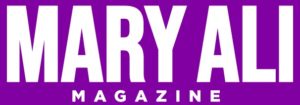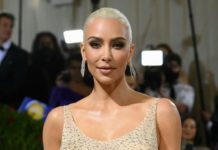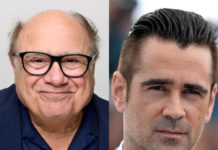UPDATE: Rep. Liz Cheney (R-WY) said that former President Donald Trump tried to reach out to a January 6th Committee witness, who has not yet been heard from at the hearings, and that the incident has been reported to the Justice Department.
“We will take any effort to influence witness testimony very seriously,” Cheney said toward the end of Tuesday’s hearing.
Cheney said that the witness “declined to answer” Trump’s call, but instead referred the matter to their attorney, who then contacted the committee.
“This committee has supplied that information to the Department of Justice,” Cheney said. She said that Trump made the call after the last committee hearing, in which Cassidy Hutchinson, a former aide to chief of staff Mark Meadows, testified.
PREVIOUSLY: The January 6th Committee once again delivered a riveting and disturbing narrative of the lead up to January 6th and the aftermath, in a nearly three-hour hearing that included vivid testimony about Donald Trump’s culpability for instigating the siege on the Capitol.
The hearing’s two witnesses, Jason Van Tatenhove, former spokesman for OathKeepers, and Steven Ayers, who plead guilty to entering the Capitol on January 6th, bolstered the committee’s effort to show the links between Trump’s election rhetoric and how it mobilized extremist groups and faithful supporters to action.
Ayers told the committee that, had Trump called off his supporters from the Capitol earlier in the afternoon, “we wouldn’t be in as bad of a situation.” Instead, Trump waited until 4 PM, after the Capitol had been sacked, to call the crowd to disperse.
He also said that he had not planned to go to the Capitol that day and instead just attend Trump’s speech at the Ellipse. But he went when Trump, in his speech, called on his supporters to march there. Trump said that he would be there with them, but he did not go.
“I think everybody thought he would be coming down,” Ayers said. Their testimony was just one of a number of revelations from the hearing.
On the night of January 6th, Brad Parscale, who was Trump’s campaign manager in 2020 and adviser in 2016, sent texts to Katrina Pierson, who was involved in planning the rally at the Ellipse. “A sitting president asking for civil war,” Parscale wrote. “This week I feel guilty for helping him win.” When Pierson responded that the Capitol attack “wasn’t his rhetoric,” Parscale responded, “Yes it was.”
Trump’s speech on January 6th originally did not include references to Vice President Mike Pence, whom he was pressuring to reject the electoral vote count. When Pence told Trump that he would not try to block the count because he did not have the authority to do so. Trump called him a “wimp” and other insults, and then his speechwriters were ordered to put references to Pence back in the speech. The speech was to include just one reference to Pence; Trump ended up calling out his vice president six times at the rally. At the Capitol, supporters were heard chanting “Hang Mike Pence!”
PREVIOUSLY: Steve Bannon spoke to Donald Trump twice by phone on January 5, the day before the attack on the Capitol, according to the January 6th Committee.
After the first, 11-minute conversation, Bannon said on his podcast, “All hell is going to break loose tomorrow.” They later spoke in the evening, according to the committee, for six minutes.
Bannon, former chief strategist to Trump, is facing contempt charges for rejecting the committee’s subpoena, but has recently agreed to appear before the committee.
PREVIOUSLY: A Twitter employee, whose face and voice was obscured, said that Donald Trump’s early morning Dec. 19 tweet, calling for a rally in Washington, D.C. on January 6, 2021, produced threatening responses that “felt as if a mob was being organized.”
“They were gathering together their weaponry and their logic and their reasoning,” the anonymous employee said, who was “shocked” over the responses to the then-president’s tweet. Trump tweeted for supporters to show up. “Be there, will be wild!” he wrote.
After the tweet was sent, Alex Jones, the far right conspiracy theorist, called for Trump supporters to show up on January 6th. Other supporters posted messages on far-right and racist message boards, advocating violence against police guarding the Capitol. Jody Williams, operator of the far right site Thedonald.win, said in his video testimony that other plans fell by the wayside and “anything else was going to be shut out and it was just on the 6th.”
The Twitter employee said that after Trump said, at his Sept. 29 debate with Joe Biden, that the Proud Boys should “stand back and stand by,” there was concern at the company because it was the first time Trump was “speaking directly to extremist organizations.” But no action was taken to change policy, as Twitter “relished in the knowledge that they were also the favorite and most used service” by Trump.
Trump wrote the tweet after a stormy, six-hour meeting in which Rudy Giuliani, Sidney Powell, Michael Flynn and Patrick Byrne, the former CEO of Overstock, clashed with members of the White House staff, including White House Counsel Pat Cipollone. It was unclear how Giuliani & Co. gained access to the White House and, for a period, met with Trump in private, without official members of the White House staff present.
But they were there to press their false election fraud claims, even as Cipollone and other White House officials pressed them to come up with evidence. Powell had advanced the idea of Trump issuing an executive order, drawn up at the Trump International Hotel, to seize voting machines and appoint her a special counsel, but that was rejected by Cipollone and other White House officials.
“I was vehemently opposed,” Cipollone said in his testimony from last week. “I don’t think she should have been appointed to anything.” At the time, Cassidy Hutchinson, the aide to then-Chief of Staff Mark Meadows, called the meeting “unhinged.” He said that the proposal for the federal government to seize voting machines was a “terrible idea for the country.”
PREVIOUSLY: Rep. Liz Cheney (R-WY), the vice chair of the January 6th Committee, said that the hearing has had an impact in that, among Donald Trump’s defenders, “there appears to be a recognition that the committee has established key facts.”
The argument from team Trump, she said, has shifted to claims that Trump was ill served by advisers in the lead up to January 6th, including figures like attorneys Rudy Giuliani and Sidney Powell, and that the then-president “couldn’t tell right from wrong.”
But given that he was told repeatedly that his claims of election fraud were bogus, Cheney said, Trump cannot escape responsibility.“President Trump is a 76 year old man. He is not an impressionable child,” Cheney said.Cheney said that, after being told of the lack of evidence for the fraud claims, “no rational sane man” would continue to pursue election fraud claims and move forward with plans for January 6th.She also said that the testimony of Pat Cipollone, the White House counsel, “met our expectations.”
PREVIOUSLY: Two weeks after a surprise witness delivered devastating testimony about then-President Donald Trump’s conduct during the Capitol attack, the January 6th Committee returned with a hearing focused on the role of extremist groups in planning the siege.
But Tuesday’s hearing, once again carried across broadcast and cable networks, also is expected to shed some light on the closed-door testimony last week of Pat Cipollone, the White House counsel, with reports that he did not dispute what has been heard in past hearings. In an interview with NBC News, committee member Jamie Raskin, a Democrat from Maryland, said that he did not hear Cipollone contradict what Cassidy Hutchinson testified to earlier this month.
Hutchinson, former aide to Chief of Staff Mark Meadows, testified that Trump and Meadows had been warned about the possibility of violence on that day. She also testified that Trump was more concerned with his crowd size at the Ellipse rally on January 6, rather than concerns over his own security given that some of the demonstrators had weapons. “They’re not hear to hurt me,” Trump said, according to her account. She also said that Cipollone warned that they would be charged with “every crime imaginable” if Trump was allowed to travel to the Capitol after his rally.
The hearing on Tuesday is expected to include clips of Cipollone’s testimony from Tuesday. A focus of the committee also was expected to be on ties that far right groups like Oath Keepers and Proud Boys had to Trump allies.
The hearings themselves have had a noticeable uptick in the number of reporters in the room as well as visitors watching in person. A couple dozen stood off to the side of the Canon Caucus Room. The interest is a contrast to the hearings that preceded Trump’s first impeachment, with gallery seats unfilled as the sessions went on.




